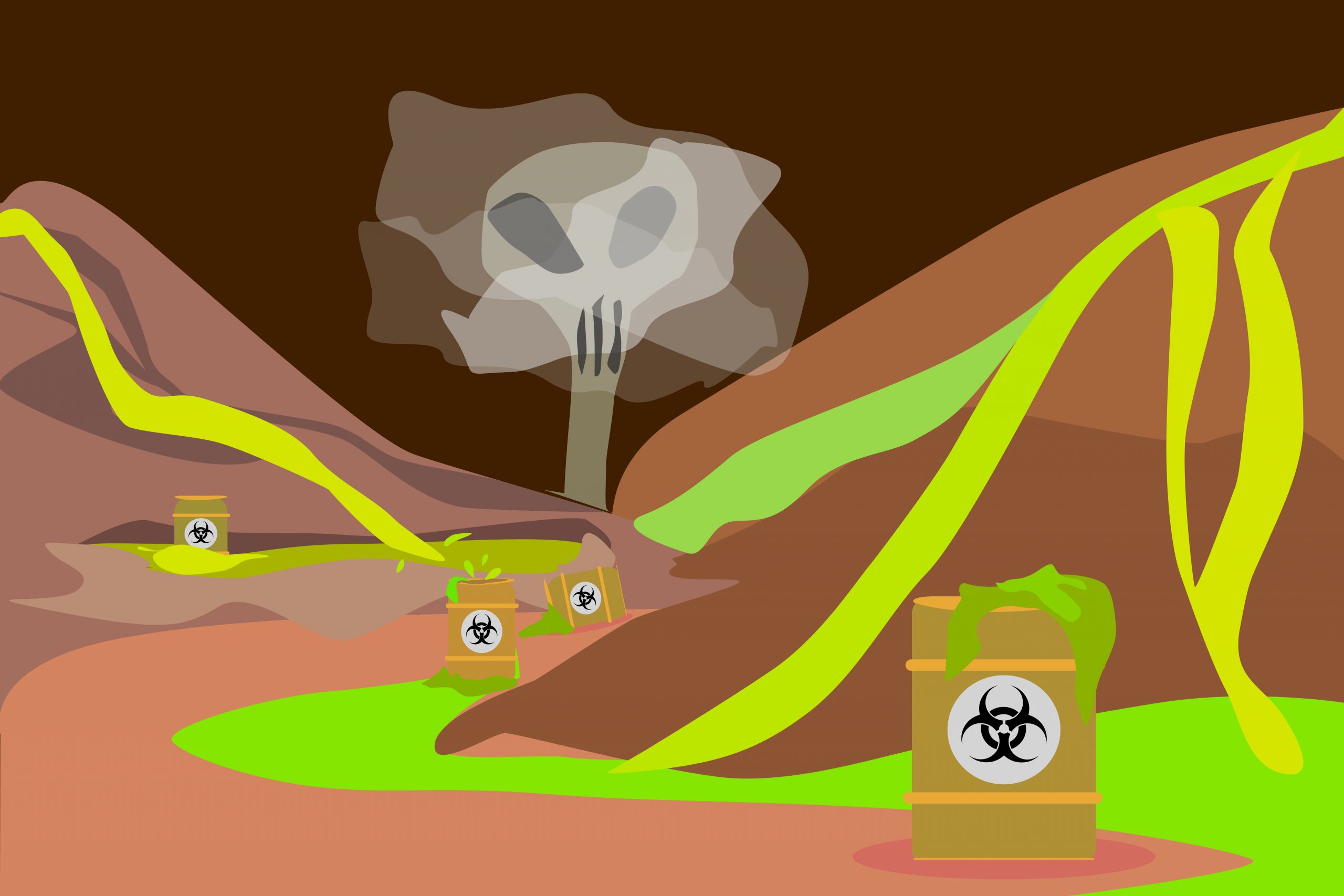What happens when an abandoned lead mine’s tailings begin leaking into a nearby water source? Or when a landfill that’s nicknamed “toxic bathtub” hasn’t been properly sealed with polyethylene liner to prevent leachate from seeping into the groundwater? The answer is: These toxic sites join their noxious brethren on the Environmental Protection Agency’s (EPA) registry of Superfund sites, or land that’s been contaminated by hazardous materials, degraded the surrounding environment and poses a risk to the public’s health.
Back in 1980, the Comprehensive Environmental Response, Compensation and Liability Act (CERCLA), also known as the Superfund program, was initiated in hopes of mitigating the adverse effects that resulted from these polluted sites. The National Priorities List (NPL) was then drafted as a means to organize the areas that are most in danger of becoming a health hazard. Currently, the NPL contains 1,322 locations — many of which are to be expected, including landfills and old lead, mercury and asbestos mines. However, a surprising number of government-run toxic sites take residence on the list too, such as air force and naval bases as well as numerous army depots and ammunition plants.
The process by which a contaminated site joins the NPL is multi-phased, and it begins by notifying the EPA, which then conducts a site assessment. Two principal factors that determine whether a site should make the NPL are the type of contaminant and the environmental medium that’s been contaminated. There are five primary sources of contamination that cause the most concern, and four mediums in which they pose the most danger.
Contaminants
Lead: The most common contaminant, found at 43% of all Superfund sites, is lead. It is extremely toxic when inhaled or ingested.
Dioxin: This is a byproduct of industrial processes like the bleaching of paper pulp, pesticide manufacturing, and combustion — or incineration in industry terms.
Asbestos: Typically, asbestos contamination is caused by improper disposal of the mineral or its use in an industrial operation. Once a popular material used in construction because of its resiliency and fire retardant nature, asbestos is a commonly found contaminant at Superfund sites.
Radiation: Several factors can determine if a site is radioactively contaminated, which include the type of radioactive elements involved, the amount of contaminant and the likelihood of human exposure.
Soil bioavailability: Bioavailability is how much of a contaminant can be ingested, inhaled or absorbed upon skin contact. Therefore, soil bioavailability measures the amount of contaminant absorbed by the location’s soil.
It should be noted that possible contaminants are not limited to the five listed above, as there have been over 600 reported varying contaminants found at the registered NPL areas. But now that we’ve addressed the types of pollutants that have been found at Superfund sites, let’s now look at the methods of contamination.
Environmental Mediums
Sediment: Heavily toxic runoff is the most common method of sedimentary contamination. Other, less common means of sedimentary contamination include air pollution, which is caused when particles of chemicals, like mercury, are dispersed into the air and contaminate the sediment upon contact.
Air: Many of the contaminants that end up on these toxic sites take on a variety of forms, increasing the possibility to further spread pollutants. A common way that air contamination occurs is through vapor and contaminant-enriched dust.
Groundwater: There are a few ways in which groundwater can become contaminated. Surface level spills and septic systems are the most common factors behind groundwater contamination. Oftentimes, when groundwater has been contaminated, it spreads to wells within the area, polluting all nearby drinkable water.
Soil: Contaminated soil is one of the most dangerous environmental mediums to be near, as it’s extremely good at transporting contaminants. Residents of Superfund sites with contaminated soil are warned to not wear their shoes indoors, for fear of tracking in traces of contaminants. The Soil Screening Guidance was created to help assess the contaminant concentration levels within the soil.
These toxic sites are given a numerical score by the Hazard Ranking System, which uses the information from the preliminary assessments to assign a level of risk to the site. However, the lack of existing data causes these scores to be inaccurate representations of the area’s potential danger.
The better way to rank these sites is with the Human Exposure Environmental Indicator. This indicator splits into two subcategories: the safest sites, classified as “Human Exposure Under Control,” and the most dangerous sites, classified as “Human Exposure Not Under Control.” Not under control means that somewhere on that site is an unsafe amount of contaminants that people could come into contact with. Using this indicator as a reference, here are the five most toxic Superfund sites:
5. McCormick & Baxter Creosoting Co.
Located in Stockton, California, the former wood-preserving facility stored the waste it generated as a byproduct in unlined ponds and concrete tanks. There was also recorded groundwater contamination that eventually bled into the aquifer that supplies the nearby town’s drinking water. Pentachlorophenol-contaminated stormwater runoff, as well as extremely concentrated soil contamination, rounds out this septic site’s toxicity.
4. Lipari Landfill
Located in Mantua, New Jersey, this poisonous plot is teeming with dangerous chemicals — 150 different types in total. With its war-like history of one explosion and two fires, this landfill became a site that contaminated the local drinking water, which was later linked to low birth rates and an influx of child leukemia cases. It also greatly diminished the air quality.
3. Washington County Lead District – Old Mines
Located in Old Mines, Missouri, this is one of three toxic sites in Washington County on the NPL list. Lead contamination of private drinking wells and dust found in residential yards close to the site are the primary causes. Additionally, the dust distribution resulted in highly concentrated soil contamination.
2. Washington County Lead District – Richwoods
Located in Richwoods, Missouri, this site’s main contaminants included lead and arsenic. Because nearby residents were not explicitly warned of the threats to their health, they had taken to using old mine waste as an inexpensive alternative for gravel in their driveways and even their children’s sandboxes.
1. Big River Mine Tailings/St. Joe Minerals Corp.
Located in Desloge, Missouri, this site’s contaminants consisted primarily of lead and zinc from a collection of eight areas that were used to store mine waste. During a bout of heavy rain in 1977, sludge from each of the eight waste sites was released, seeping its way downstream into the Big River. Following this, residents were advised not to catch and eat any fish from the river, as they were highly contaminated.
While these five places are listed as the most toxic sites, the remaining 1,317 places on the NPL continue on in the same fashion. I urge everyone to check to see if they live near a Superfund site because not only have recent studies concluded that living near a Superfund site shortens your lifespan, but climate change threatens to leave 60% of the nation’s Superfund sites vulnerable, in turn releasing more contaminants. Visit the EPA’s website and find out for yourself whether there’s a site near you.


















Thank you Megan. I hope you continue your efforts to make our “mother earth” a better place.